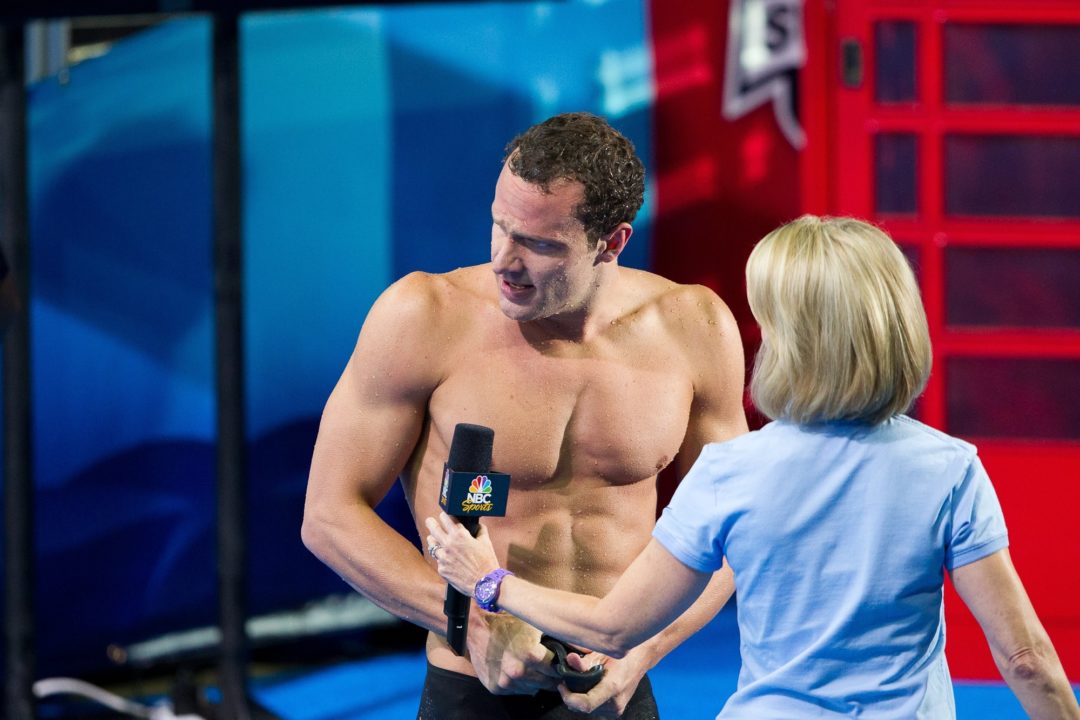TritonWear and SwimSwam are bringing you the best in swimming race analysis. With the power of TritonWear, you can have an in-depth analysis of your practice every day with zero effort. Today we are having a closer look at one of the fiercest duels in swimming: Kosuke Kitajima vs. Brendan Hansen.
The rivalry between Kosuke Kitajima and Brendan Hansen is one of the most well-known in the swimming world, and it came to a head at the 2004 Olympic Games in Athens. In the 100-meter breaststroke final earlier in the competition, Japanese superstar Kitajima narrowly out-touched the American to take gold. After turning around to see the results, he let out primal screams of victory – screams that were said to have haunted Hansen, further fueling the hype leading into their next showdown. The pair faced off again in the 200 m breaststroke, giving Hansen a chance at redemption. Also vying for gold was the young Hungarian Daniel Gyurta – only fifteen years old in 2004, but already fast enough to challenge the veterans.
All eyes were on the middle of the pool as the 200 breaststroke final stepped up to their lanes. Kitajima exploded off the blocks, launching himself into an early lead with his powerful and smooth technique. He touched under world record pace on the first 50 in a blistering 29.10. Hansen attempted to battle back but Kitajima held him off through the 100-meter mark, though they were almost neck-and-neck with very similar metrics. Gyurta held back in seventh place with much slower splits, but he wasn’t out of the race; his strategy was to conserve energy with a relaxed stroke rate at first and then strike on the back half of the swim.
This month only, TritonWear is giving away a FREE TritonWear Starter Pack.
Click below and you can start your training camp like a pro.
Things started to get interesting on the third length. The stroke rates of the three competitors varied considerably; Kitajima took only 16 powerful strokes, traveling a very long distance of 2.59 meters per stroke, while Gyurta ramped up his rate considerably to 1.3 seconds per stroke, taking 22 strokes. This increase in rate helped him to move up on his competitors, who continued to battle for the lead into the last turn. Coming off the wall into the final length, it was anybody’s race.
But as they charged down the pool on the last 50, it was clear Kitajima had the upper hand. For the first time during the race his stroke rate jumped above Hansen’s, all the while maintaining the greater level of efficiency he had demonstrated over the entire 200 meters with higher stroke index readings. This gave Kitajima the boost he needed in the final 15 meters to break ahead of his competitors and barrel into the finish with a powerful flurry of strokes to take gold in an Olympic record time of 2:09.44.
Hansen faded during this same stretch of pool. His stroke rate of 1.39 seconds/stroke was no match for Gyurta’s at a breakneck pace of 1.17 seconds/stroke, and the Hungarian managed to surge ahead of the American at the touch to take the silver medal. Though Hansen settled for bronze and once again had to witness the celebrations of his rival from across the Pacific, this race will go down as one of the most epic showdowns in swimming history.
With TritonWear, you can explore your practice with an in depth analysis every day with zero effort and track your progress throughout the season. Train smarter with TritonWear.
Don’t miss the chance to take the next level in your practice.
This month only, TritonWear is giving away a TritonWear Starter Pack for free.
Click below and you can start your training camp like a pro.
Courtesy of Tritonwear, a SwimSwam partner.

